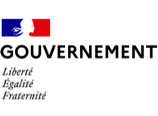C4 category
Telehealth
Which solutions are C4 category?
These are the solutions of:
- teleconsultation,
- tele-expertise,
- tele-surveillance,
- tele-need,
- tele-adjustment,
- tele-rehabilitation or telerehabilitation.
Teleconsultation and tele-expertise solutions are for professional use, with no CE marking required, and are most often the subject of the same financing arrangements as solutions in the support service category (A1).
The telemonitoring digital medical device enables remote monitoring by a care team. Thanks to the generation of alerts and data on health status it enables professionals to prioritize patients in need of short-term attention to avoid health complications.
Is medical CE marking necessary?
Digital solutions in this category must be CE marked.
Target users
This category includes solutions used by both the patient and the healthcare professional.
Existing funding
- Digital medical devices fortelemonitoring are supported on the liste des activités de télésurveillance médicale (LATM). In order to be eligible for inclusion on this list, they will notably need to have had a favorable opinion from the HAS and to have obtained a certificate of conformity to the interoperability and security referentials established by the Agence du numérique en santé.
- Thetelemonitoring solutions of a medical device can be covered via reimbursement from the LPP. The remote-adjustment medical device is made available to the patient by a professional such as an optician or hearing aid specialist, or a retail distributor. These solutions could also be covered via the act when remote adjustment is carried out by a healthcare professional (doctor, nurse, etc.).
- Digital solutions for telereducation or telerehabilitation have been covered since the health crisis provided they correspond to a medical prescription, as part of team coordination with at least three different interventions carried out by at least two different professionals during the same week. Find out more, by consulting the ATIH coding instruction.
In addition, these digital medical devices can be paid for bythe patient, complementary health insurance or from the facility budget of health centers carrying out telecare activities.
Examples
Cardiac telerehabilitation for coronary patients
This solution includesa portalfor the care team andan interfacefor the patient, secure messaging, a therapeutic education module and a health data monitoring module (heart rate during exercise sessions) and a teleconferencing module.
Cardiac rehabilitation usually takes place in rehabilitation centers in medical rehabilitation care (SMR). Cardiac telerehabilitation consists in particular of physical activity sessions at home, therapeutic education sessions via videoconferencing and remote monitoring by the cardiologist, in order to allow the patient to return to active life as quickly as possible.
In the context of the health crisis, in order to reserve hospitalization for urgent situations, the coding of telerehabilitation days in the Programme de Médicalisation des Systèmes d'Information (PMSI) for SMR establishments is possible,although this act is not yet covered by common law.
A digital solution for remote medical monitoring
We're considering a digital telemonitoring platform whose aim is to keep polypathological elderly people at home. The aim is to reduce the number of emergency room visits and hospitalizations, and to improve home care for the patient and his or her family. The platform is used by a care team comprising doctors, nurses and care assistants. The platform is a digital medical device that issues alerts when personalized thresholds are exceeded. Data are collected from connected objects (blood pressure monitor, thermometer, glucometer, etc.), then analyzed by algorithm, which is part of the solution's medical CE marking scope.
A digital solution for remote education
A remotely supervised self-education device is being considered to support the rehabilitation of stroke patients. The solution offers game-based activities to train patients to perform movements independently as part of their rehabilitation. This medical device requires a screen and a camera. The solution enables the patient to work on his or her exercises on a daily basis, and to be monitored asynchronously by the healthcare professional. The healthcare professional can monitor the patient's compliance and performance, and program patient-specific exercises. The platform also provides a telecare platform, which can be used by all those involved, to improve coordination of the rehabilitation pathway and structuring of care.
A digital remote control solution
For a patient benefiting from a sound processor for a cochlear implant system assessed by the HAS and reimbursed on the LPP. The digital solution enables hearing rehabilitation, combined with the possibility of remote adjustment and remote monitoring in defined cases of deafness.
The remote adjustment function is enabled by dedicated software, while another software brick enables the transmission of data filled in by the patient, such as hearing performance self-assessment questionnaires, to the healthcare professional.
There is no individualized act registered in the CCAM allowing remote adjustment to date. At the time of the HAS assessment of this medical device, the reimbursement framework for remote monitoring had not yet come into force. Consequently, the HAS jointly assessed the DM and the remote monitoring and adjustment functions, describing in particular for each the eligibility criteria, feasibility, monitoring modalities as well as the technical environment. Medicare coverage therefore enables remuneration of the medical device and associated functions, without enabling the healthcare professional's act to be covered via a specific act.
The remote monitoring function could be covered separately on the list of medical remote monitoring activities (LATM), while the remote adjustment function could benefit from specific coverage of this service via the LPP to also enable finer-grained monitoring.

